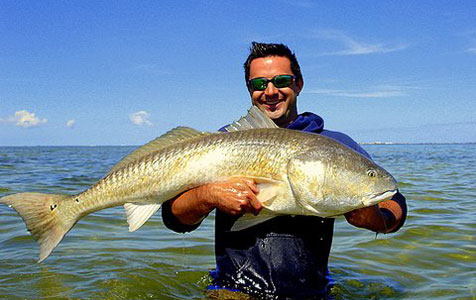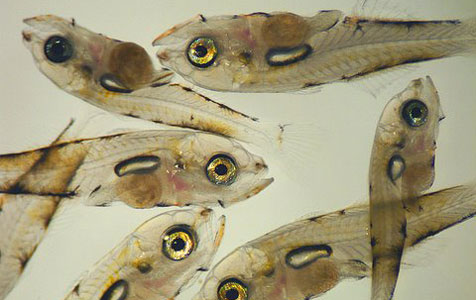
The author with an Indian River (Florida) Redfish, part of a breeding population that does not migrate from lagoon to ocean to spawn.
What food and game fish aquaculture can teach us about raising ornamentals
Aquaculture is nothing new. In fact, its origins can be traced back to 2,500 BC when the ancient Egyptians grew tilapia in earthen and stone ponds.
Modern aquaculture has made a wealth of technological advancements in recent decades, and food fish aquaculture has become a major enterprise throughout the world. Although freshwater species such as catfish and salmon rank among the top aquaculture products in the United States there has been great motivation to bring marine species to the forefront of food fish markets.
At first glance, it is hard to imagine that a flounder, an amberjack, a cobia, or even a cod has anything in common with a dainty aquarium fish, but we can learn a surprising amount from the success of aquaculture in these species.
The ocean is an incredible and dynamic scene that sets the stage for some truly unique reproductive strategies. Virtually all reef fish, with a few notable exceptions such as the Banggai Cardinal (Pterapogon kauderni) and the Spiny-tail Damsel, exhibit a bi-partite life cycle where the adults live in close association with the bottom while early larvae are found in the open ocean. Most reef fishes reproduce by casting hundreds or thousands of tiny, buoyant eggs adrift in the ocean.
With no parental care, the eggs are left to develop, hatch, and if they are lucky, survive to metamorphosis and recruit to the adult population. For years, pelagic spawning species of reef fishes have intimidated most hobbyist breeders and small scale entrepreneurs.
In years past, it was hard to enough to fathom hatching demersal eggs and dealing with pelagic larvae, let alone starting with a pelagic egg. But, food-fish aquaculturists have been doing just this for years. Every species of marine food fish produces pelagic eggs giving us years of information and advancements available in journal articles, magazines, technical reports, conference proceedings and books.
So don’t be intimidated. Look to the foundation that has been cast before us.





